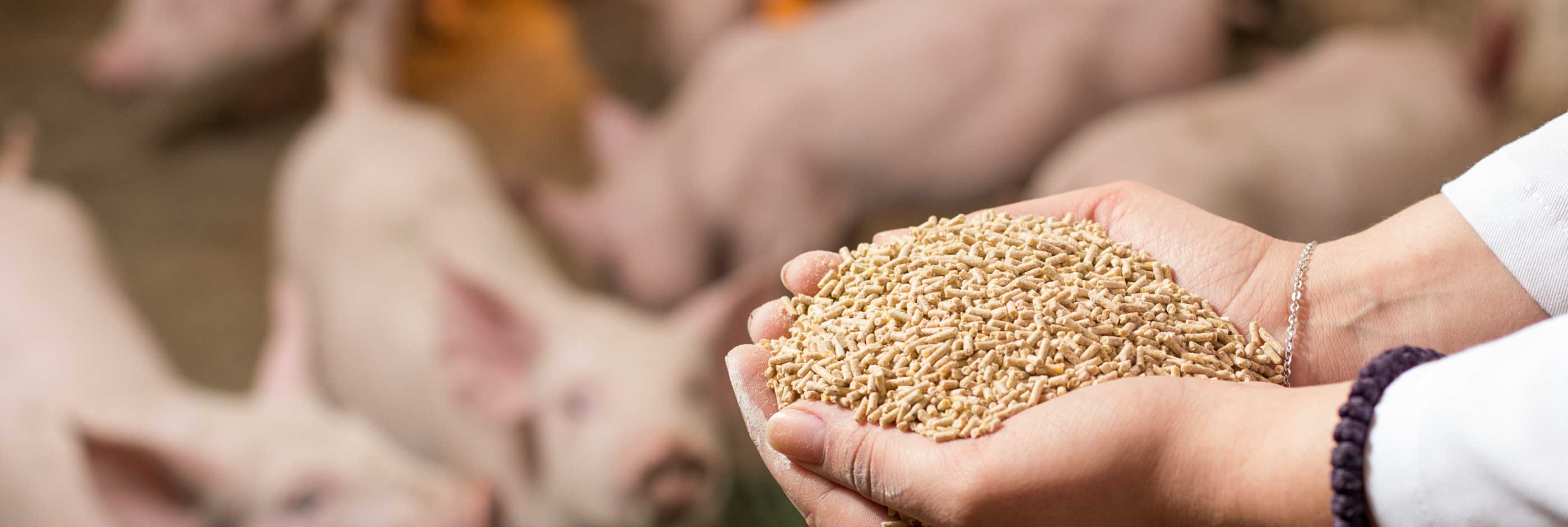"Gut health" in animals, the ubiquitous term in animal nutrition today.
Currently, the term "gut health" is, without any doubt, one of the most widely used expressions in animal nutrition for both scientific and marketing purposes. We could think that it is just a “trendy” concept, however the gastrointestinal tract (gut) and its health status really play a key role in the proper physiological development of animals and, in the end, in their growth and performance. Thus, everyone talks about “gut health” but...
What does “gut health” really mean?
In short, gut health is the organizing balance between the different components of the gastrointestinal tract (epithelial structure and function, gut microbiota, feed digestion and nutrient absorption, mucosal immune system, gut-associated lymphoid tissue -GALT-, and enteric nervous system), regardless of the presence or absence of gastrointestinal disorders.
Many animal scientists and nutritionists have attempted to define "gut health" in recent years, but there are primarily two comprehensive definitions. Kogut and Arsenault (2016) described it as the “absence/prevention/avoidance of disease so that the animal is able to perform its physiological functions in order to withstand exogenous and endogenous stressors”. However, Pluske et al (2018) went one step further and defined it as a “generalized condition of homeostasis in the gastrointestinal tract, with respect to its overall structure and function”. The novelty and relevance of the second definition lies in the fact that gut health in animals can be compromised even in the absence of any overt disease in the gastrointestinal tract.
Why does gut health matter so much?
Gut health is extremely important because the gastrointestinal tract is the organ that has the largest contact surface with the environment, providing an effective barrier function that reduces exposure to harmful environmental elements and potential pathogenic agents, while allowing the absorption of nutrients and the excretion of waste substances. In other words, the correct functioning of the gut is the basis for appropriate nutrition and, consequently, a proper metabolism of the animal organism, as well as an extremely important defense barrier for that same organism. Both main gastrointestinal functions (feeding and defending) are two fundamental pillars for the growth and development of animals.
Impact of gut health on the overall health of animals
More than 2,000 years ago, Hippocrates — the father of modern medicine — suggested that all disease begins in the gut. Perhaps the famous Greek physician exaggerated a little bit, although evidence does show that many systemic and metabolic diseases begin in the gut. If the gastrointestinal tract does not function properly, the general health of the animal organism will be harmed in one way or another. But how does that happen?
The gastrointestinal tract is not a compartment isolated from the rest of the animal organism, but there are numerous links between the key components of the gut and the rest of the body. In this sense, the gut environment provides a platform for the growth of a diverse microbiota that is not only a barrier against colonization by pathogens, but also supplies relevant metabolites (including neurotransmitters) and nutrients (e.g., short chain fatty acids, vitamins) for the host animal. In addition, the gut microbiota regulates the immune response locally through its direct interaction with the mucosal immune system and GALT components, as well as systemically. There are direct and indirect mechanisms by which the intestinal microbiota contributes to immune responses systemically, at distant sites in the body. Lo et al. (2021) advocated, first, a direct mechanism via translocation of gut microbes, their components and/or their metabolites into the circulation and, second, an indirect mechanism in which stimulation of epithelial, stromal, or immune cells within the gut results in downstream responses that are relayed systemically. Thus, any substantial change in the composition of the intestinal microbiota, whether due to infections by pathogenic microorganisms, nutritional imbalances, or the presence of antinutritional factors in the feed, can lead to immune responses both locally and systemically affecting other vital organs.
Furthermore, the gut includes many neurons, intestinal hormones and secondary transmitters that participate in the regulation of numerous physiological functions of the animal. The association between the enteric nervous system and the higher centers via the parasympathetic nervous system and/or endocrine system also plays a key role in animal health (Moeser et al., 2017). Thus, the brain and gut are connected and participate in bidirectional communication, this network collectively known as the gut-brain axis. The gut-brain axis is therefore another way in which gut health can influence the general health and well-being of food-producing animals, which is raising a growing interest in animal production (Cao et al., 2021; Fan et al., 2021) and will certainly generate a great wealth of literature in the future.
Why gut health is particularly important in young animals
During the first days or weeks of life, depending on the animal species, the immature gut of young animals goes through growth and development rates much higher than those of the rest of the body, to become a so-called “supply” organ that provides nutrients to the body for the rest of the animal’s life. The immaturity of the young gut as well as its hectic changes make this organ much more susceptible to suffering imbalances between its components and, consequently, compromises its health. This situation is exacerbated by the high nutritional requirements at these early ages in modern intensive animal production. A young and immature gut, in frenzy of growth and development, is being asked for high performance as a “supply” organ… what a time bomb!
The two main weapons to safeguard gastrointestinal health in young animals are the mucosal immune system and GALT as well as the microbiota. Young animals need time to develop both a complex bacterial community and their immature gastrointestinal immune system, and until such developments have taken place, they are vulnerable to the presence of potential pathogens, toxins or dietary antinutritional factors in their gut. The fact of the matter is to provide our young animals with the required nutrients without straining the machinery of their guts.
Dietary protein, part of the basis of gut health in young animals
Dietary protein, and its constituent amino acids, are the nutrients with the highest requirements in young animals since they are crucial for intense muscle and organs’ growth at an early age. On the other hand, the gastrointestinal tract of young animals is not able to digest dietary protein as well as that of adult animals. The gut maturing process can take days (chicks), weeks (piglets) or even months (calves), to reach a totally competent gut. The quality of dietary protein therefore takes on special relevance during this period in which high protein and amino acid requirements overlap with low digestive capability.
That part of the dietary protein that escapes from the digestive processes and is therefore not used by the host animal can be used by pathogenic strains of bacterial species present in the intestine (e.g., E. coli,C. perfringens), promoting the proliferation of these pathogenic populations and, consequently, bacterial enteritis (Palliyeguru et al., 2011). In addition, the fermentation of undigested protein by putrefactive bacteria produces many harmful and toxic compounds, which in high concentrations may have adverse effects on animal growth and performance. The protein fermentation products include amines, indoles, phenols, cresol, and ammonia, which can all negatively affect host or cell health (Apajalahti and Vienola, 2016; Portune et al., 2016). Thus, the amount of undigested dietary protein appears to modify both the diversity and composition of the intestinal microbiota as well as the luminal environment of the gut and peripheral tissues.
In addition to protein digestibility, another possible negative effect of dietary protein on gut health in young animals may be determined by the content of antinutritional factors in protein sources. It has been shown that some anti-nutritional factors related to certain protein sources in feed can compromise gut health. In this sense, it has been observed that soy antigen beta-conglycinin induces epithelial damage (Peng et al., 2018) and the undigestible soy galacto-oligosaccharides (stachyose and raffinose) increase excreta moisture and trigger physiological stress (Teague et al., 2021).
The choice of highly digestible and clean protein sources is inescapably a measure to be considered when it comes to formulating diets for young animals in order to preserve intestinal health.


